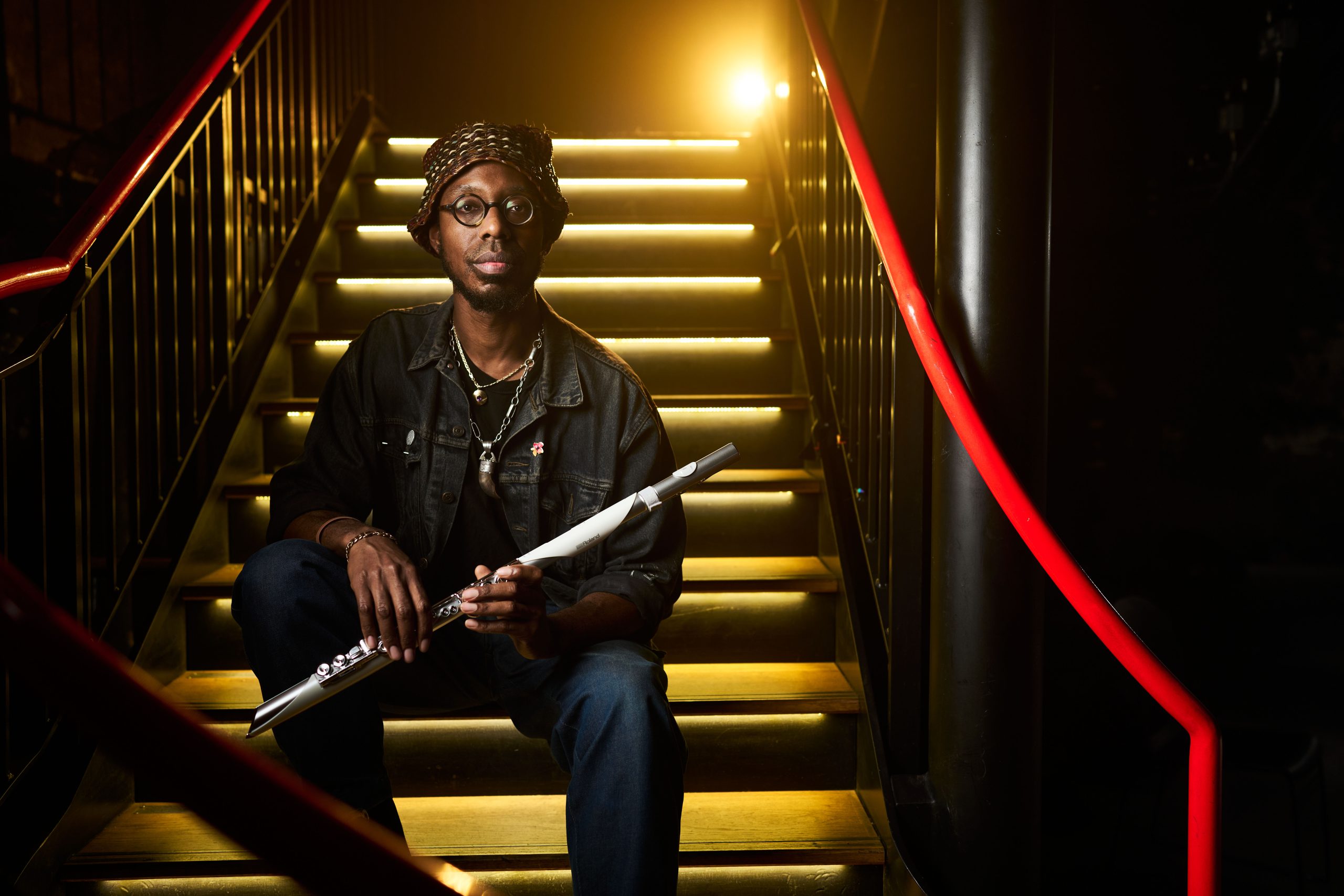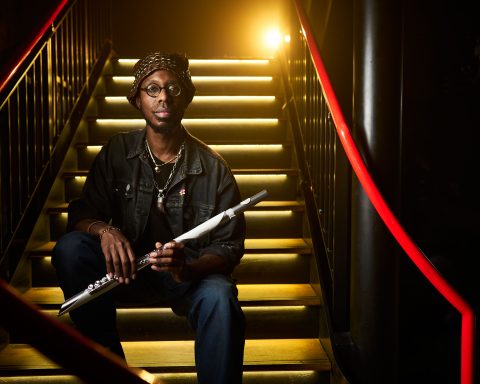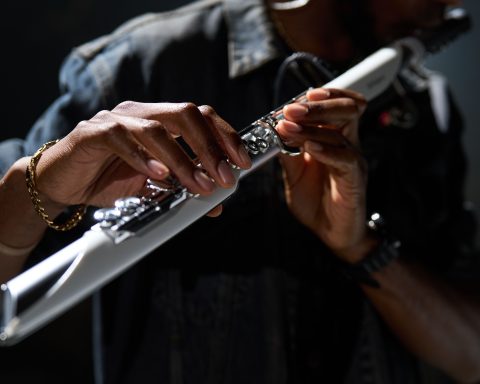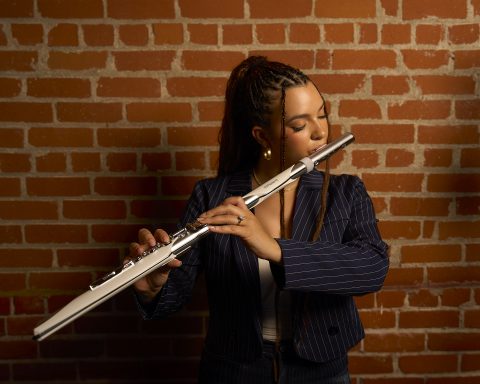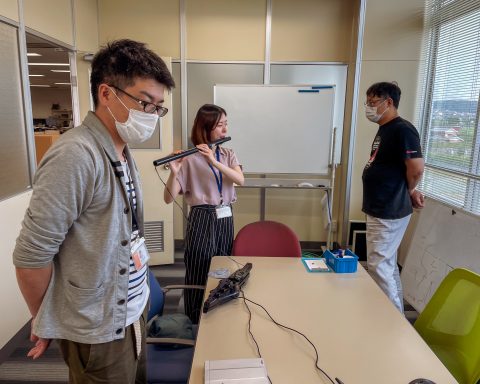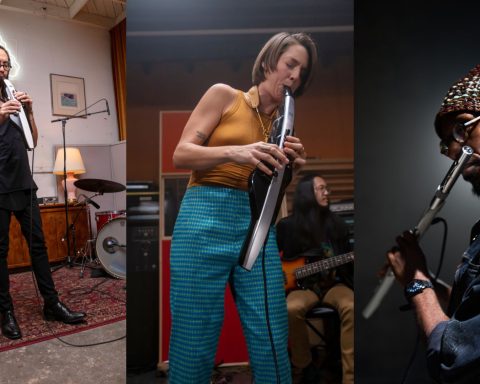Shabaka Hutchings is a British-Barbadian composer, multi-instrumentalist, and bandleader whose work sits at the crossroads of jazz, classical, and Afro-Caribbean traditions. His unique sound is rooted in deep listening, improvisation, and experimentation, often using digital tools, like the SP-404MKII, and global flutes. The renowned flutist discusses his musical journey, key collaborations, and why the Aerophone Brisa inspires him.
Global Tuning
Could you give us an overview of your musical background?
I started playing music while growing up in Barbados, which included a lot of calypso and reggae bands. At 18, I moved to London to do a degree in classical clarinet at the Guildhall School of Music while playing jazz on the local scene with numerous groups. I’ve written for various classical ensembles, including the BBC Concert Orchestra, the Ligeti String Quartet, and the London Sinfonietta. My main recording groups have been Sons of Kemet, The Comet is Coming, and Shabaka and the Ancestors, which all recorded for Impulse! Records. A lot of my practice is based on collaboration and figuring out how I react to different musical configurations.
“My various influences have taught me that there is ultimately no rule book.”
Your work spans jazz, classical, and Afro-Caribbean traditions. How have these influences shaped your approach to sound and improvisation?
My various influences have taught me that there is ultimately no rule book, and all that counts is whether I’m present in the music I’m engaged with, listening to it, and understanding its fundamental function.
Experimental Collaboration
You’ve played in ensembles that challenge genre boundaries. What role does experimentation play in your creative process?
Experimentation is how I keep myself interested in music. Even if the music I’m making is successful in terms of achieving a technical level of perfection, I’ve got to be sparked up by it and want to pursue something deeper than the surface-level sounds. So, experimentation is a way of finding unknown areas in music that pique my interest.
Your single, “I’ll Do Whatever You Want,” features André 3000 playing flute. What was that experience like?
It was great, I recorded some sessions for André’s new Blue Sun album, and he offered to play on something of mine, so we found an evening when we were both in London and made it happen alongside Dave Okumu on guitar and Tom Herbert on bass. It was basically jamming for many hours and then going through the material and selecting the best moments. From there, I took it to Floating Points, and we worked it into the finished song by adding various other elements and experimenting with various structural adjustments.
Chop, Sequence, Repeat
You’ve recently incorporated the SP-404MKII into your setup. What drew you to it, and how does it complement your live or studio workflow?
Initially, I was drawn to it because it was the tool of choice for Ras G, who I’m a massive fan of. Then, once I started experimenting with what it could do, I realized it was an expansive machine that could really help me in dealing with my recorded material creatively. I’m an avid listener of African field recordings, so I started taking various moments, chopping them up into the 404 and creating different sequences, which have brought new life and freshness into the way I listen to this music. These experiments are mainly for myself, and occasionally, I post little bits on social media, but I primarily do these creative exercises for my enjoyment. Maybe at some point an album will arise with this stuff.
“Having the ability to experiment with effecting the sound in a tactile way has also consolidated and expanded my idea of what I want to
sound like.”
Do you see digital tools like the SP-404MKII as extensions of traditional instruments or as something entirely new?
I see them as extensions for sure. I’ve really benefitted as an instrumentalist and composer by being able to manipulate my own recordings by chopping up various sections and placing them in various different sequences. Having the ability to experiment with effecting the sound in a tactile way has also consolidated and expanded my idea of what I want to sound like.
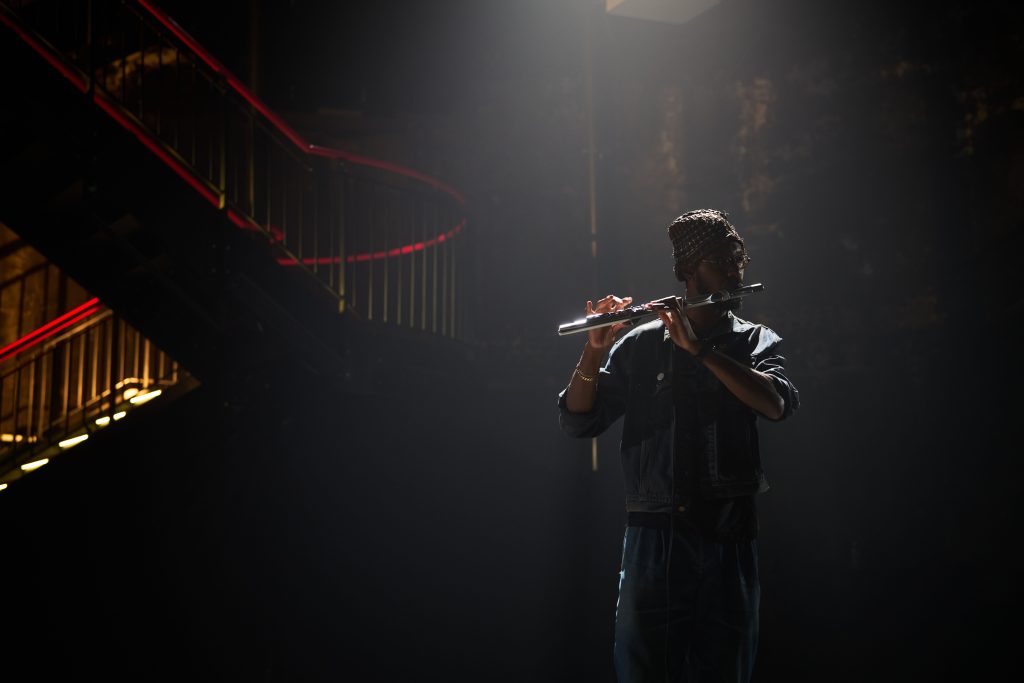
Changing Winds
What were your first impressions of the Aerophone Brisa?
I liked the range of sounds on it and the fact that I could play at any time of the day or night and in any space, like a train or airport lounge. It was exciting that I’d be able to add synth parts to my music without having to go to a piano-based instrument, since I’m not particularly confident as a pianist.
How does the Brisa compare to your experience with acoustic flutes in terms of expressiveness and control?
I think expressiveness comes from the player first and then is applied to the parameters of whatever tools are at our creative disposal. So, the Brisa can replicate some aspects of the acoustic flute experience, but I try to see it as being something else.
“As a tool for amplifying the electronic aspect of my set, I think Brisa will be a fixture.”
Were there any onboard sounds or features that immediately sparked musical ideas?
I love the matouqin sound and find it really expressive, so when I started playing around with it, I immediately started to hear it in different bits of my music.
Do you see the Brisa becoming part of your live rig or compositional toolkit?
For sure. The challenge is to figure out exactly what sounds fit best in my music and what effects need to be added to meld them into my particular sound world. But as a tool for amplifying the electronic aspect of my set, I think it’ll be a fixture.
If you had to describe the Aerophone Brisa in one word or phrase, what would it be and why?
Versatile since there’s a wide range of possibilities for where you can go with the sounds in terms of playing styles.
